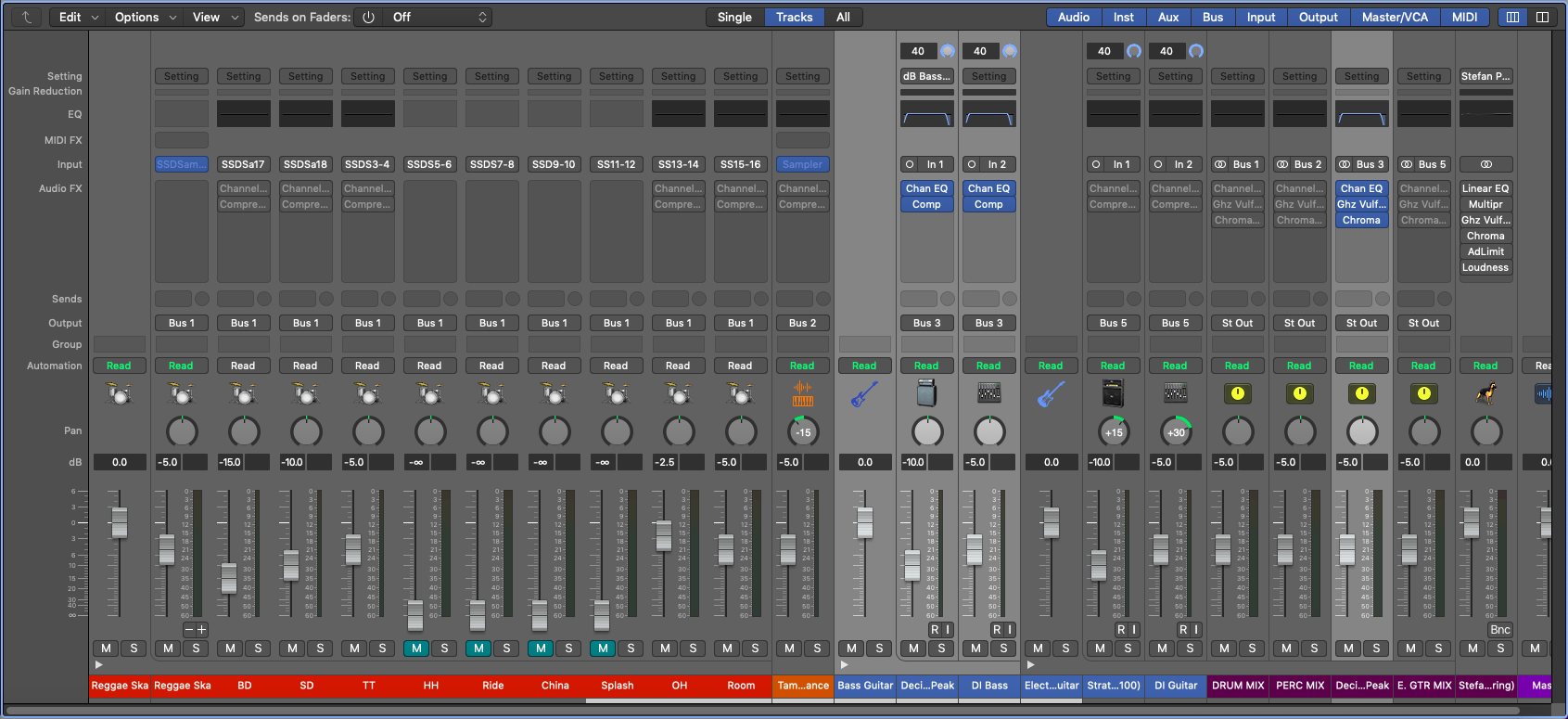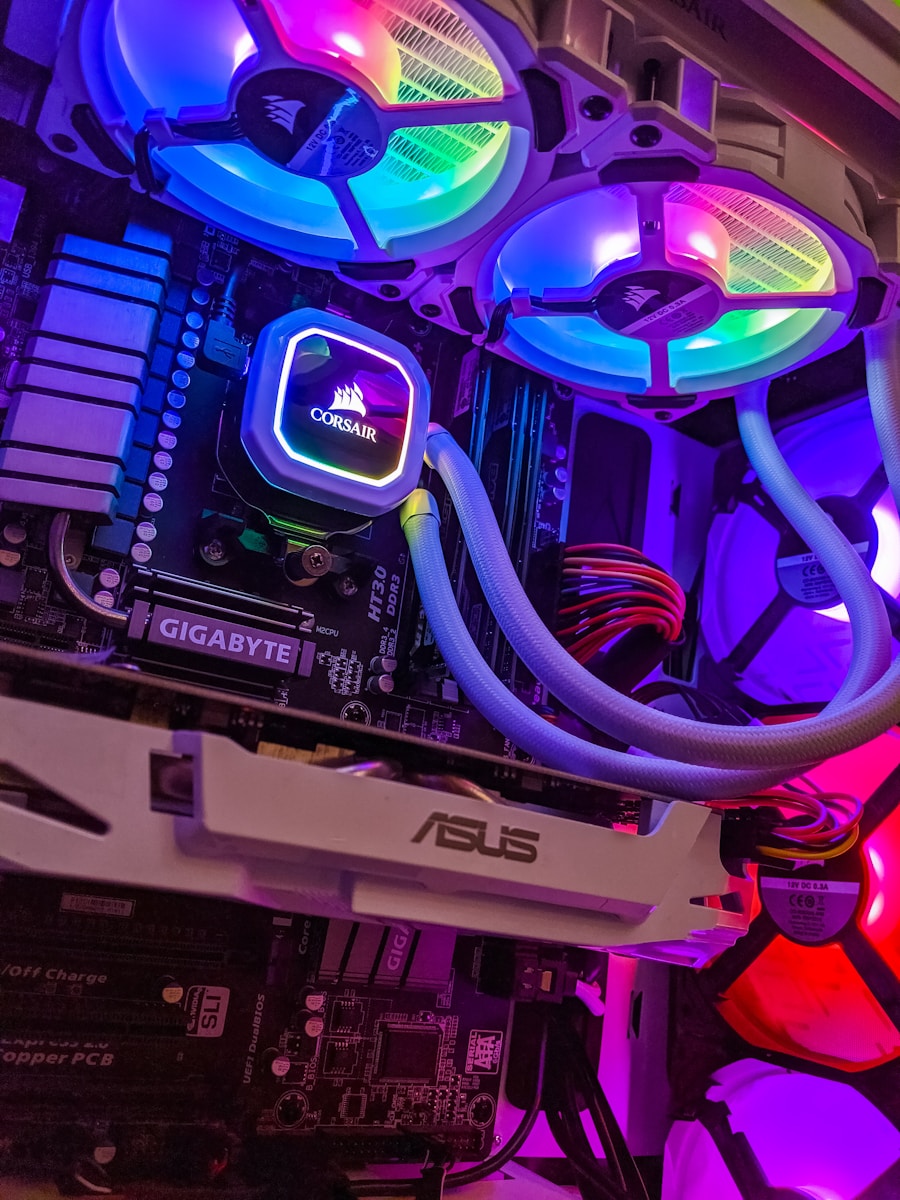- Using EQ on bass guitar in Logic Pro X
- Using compression on bass guitar in Logic Pro X
- Using reverb on bass guitar in Logic Pro X
- Using sub-mixes to organize your bass tracks in Logic Pro X
- Mixing bass guitar with your kick drum
- Download my signal-chain (presets) for mixing bass guitar
Using sub-mixes to organize your tracks in Logic Pro X
I wanted to expand on that last idea since I always work with at least TWO bass guitar tracks. One of them is fed straight into my Universal Audio Arrow (+ amp modelling software) and the other goes through my Radial Pro48 Active Direct Box.

- Step 1: Route each channel’s output to an auxiliary bus
- Step 2: Insert the same plugins (+reverb) on your bass guitar sub-mix
- Step 3: Mix your bass guitar tracks together
If you want to learn more about this recording technique, check this article out!
Of course, you’ll need to mix both of these tracks together. One of them will cover more of the high-end (usually the DI box) and the other track will cover mostly the low-end.
You’ll most likely be using this technique on other instruments (like electric guitar) and/or dealing with multiple different microphone positions (like drum kits).
That’s why I like to organize these tracks using sub-mixes.
I have one for each “family” in my projects:
- Drums
- Percussion
- Bass Guitar
- Electric Guitar
- Acoustic Guitar
- Keys
- Synths
I may also create more/less depending on the project, but you get the idea.
So, you’ll want to route your bass guitar tracks to an auxiliary bus. It’s kind of like “mastering” that instrument only. When we actually master the entire project, these sub-mixes will be fed directly to the master bus.
It’s also much easier to backtrack if ever something goes wrong.
That being said, I use the same types of plugins on my sub-mixes. HOWEVER, I’m thinking of them slightly differently since I’m starting to consider the final product much more.
That’s why I use another compressor called “Vulf Compressor” instead.

The default plugins in Logic Pro X are fantastic for providing transparency, but at some point we need to add some COLOUR! Otherwise, you’ll never get your mixes to that next level of quality.
I encourage you to start using your favourite plugins (especially compressors) at this stage.
Just remember that you’ll now be mixing the sum of all your bass guitar tracks. That means everything should be sounding pretty good BEFORE you route them to another bus.
Sub-mixes also give you much more control since you can modify the EQ, compression, reverb and even volume of multiple tracks at once. I highly recommend working with sub-mixes if you want to save yourself time, energy and potentially some money!




